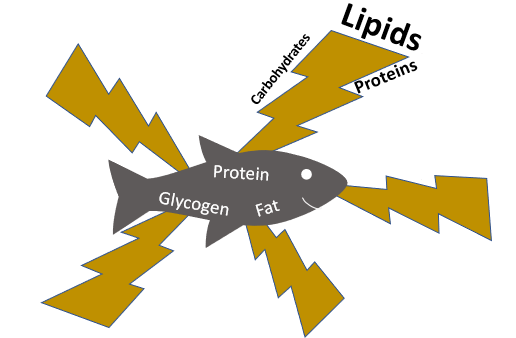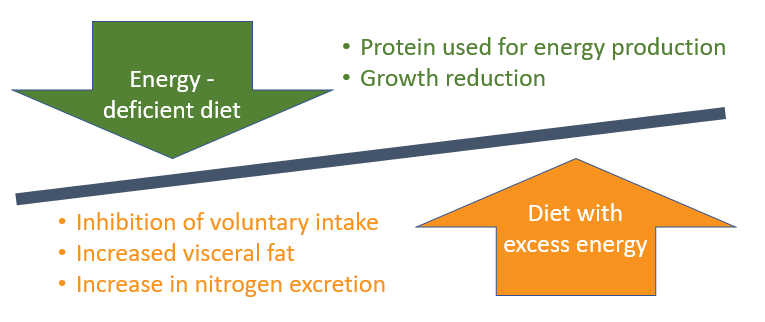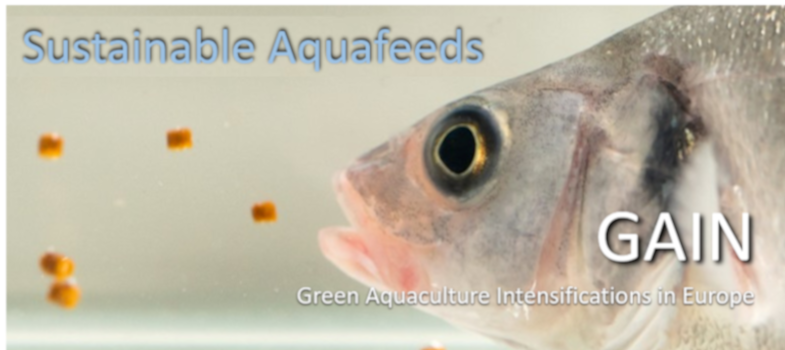Energy
To be able to perform all physiological processes properly, there must be a continuous supply of energy. Fish acquires energy from ingested feed or from stored body reserves in the form of fat, protein, and glycogen.

Figure 5. Energy sources
It is lipids and their constituent, known as fatty acids, that provide the fish with energy for their metabolic functions, along with protein, which represents the main source of energy for these animals, while carbohydrates are presented in lesser amounts. In that respect, fish lipids are primarily responsible for producing metabolic energy that is used for growth, reproduction, swimming, and storage.
Why is it so important to have an optimal energy level in the diet?
Energy in a diet has the effect of sparing proteins in many fish species, thus protein requirements are closely correlated to energy levels in the feed.
What happens when we feed fish on an energy-deficit diet?
Insufficient energy in conjunction with high levels of protein reduces the effectiveness of protein utilization.
Protein needs to be used for tissue synthesis rather than as a source of energy; therefore, supplementing the fish diet with dietary protein of good quality in conjunction with proper energy is a critical factor for optimum growth, feed consumption, and fish health, while minimizing environmental impacts.
And on the contrary, what happens when we feed fish with an excess energy diet?
Before the fish reach the necessary protein intake, there will be an inhibition on their voluntary intake of feed. After eating something extremely energetic, the fish has an immediate feeling of satisfaction. However, it did not eat enough of the other necessary ingredients, such as amino acids. High-energy diets might lead to an increase in visceral fat, as well as an increase in nitrogen excretion, a compound with high polluting potential.

Fig 6. Schematic representation of the effects caused by feeding fish with deficient diets and with excess energy
Diet for fish should provide proper protein-energy ratios and digestible energy should be fixed before determining protein levels, which is the preferred method to use when formulating practical diets for fish.
